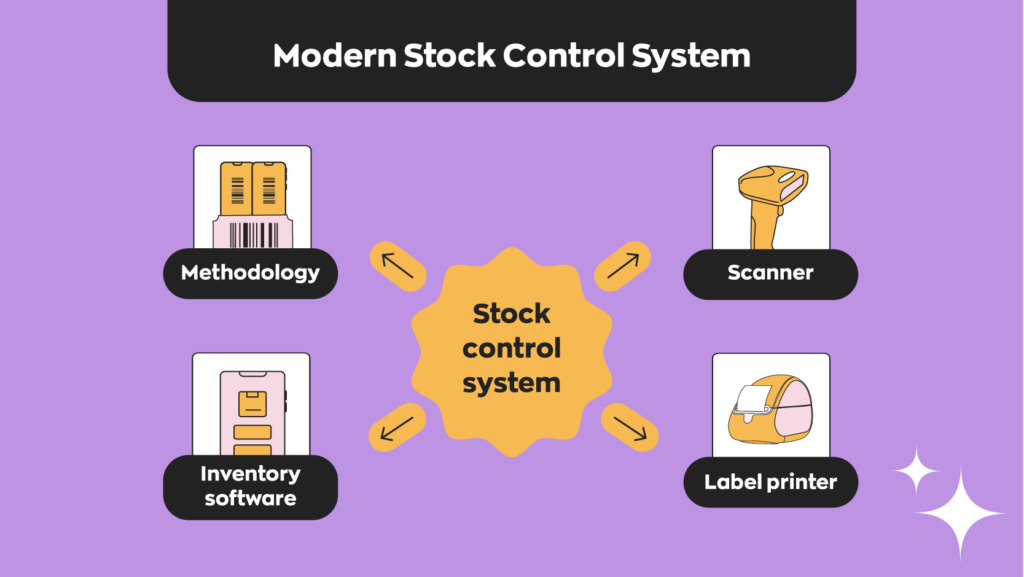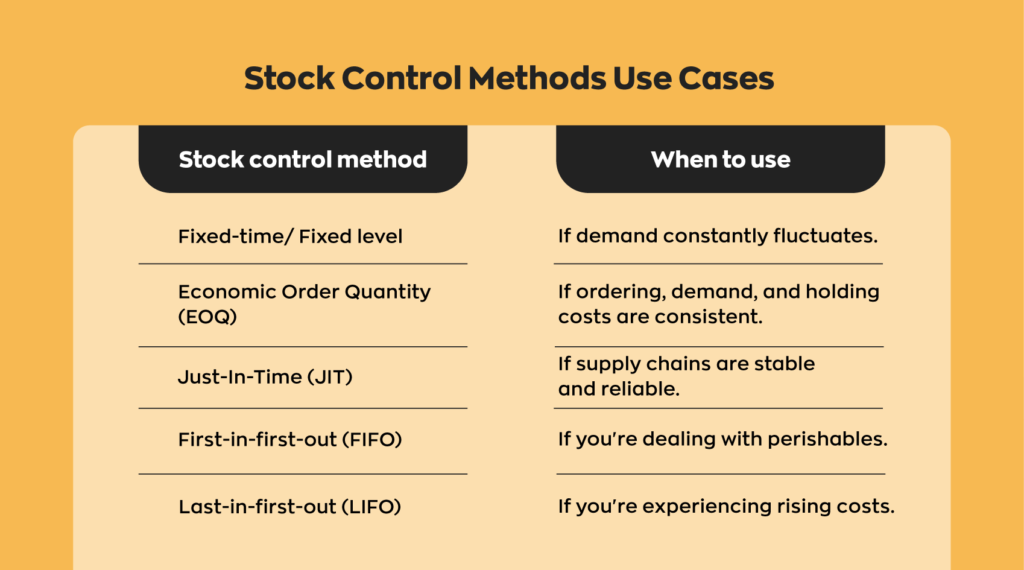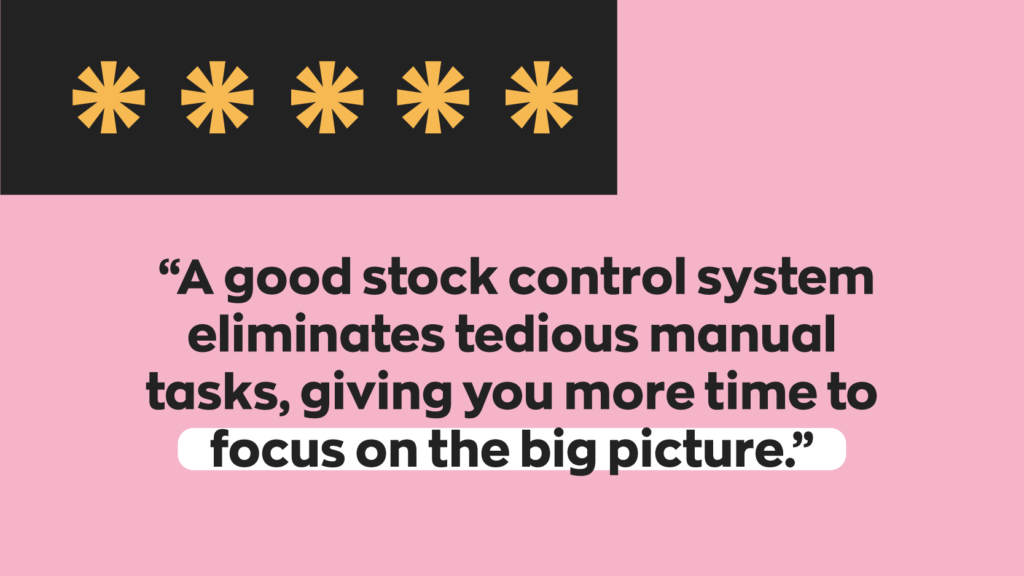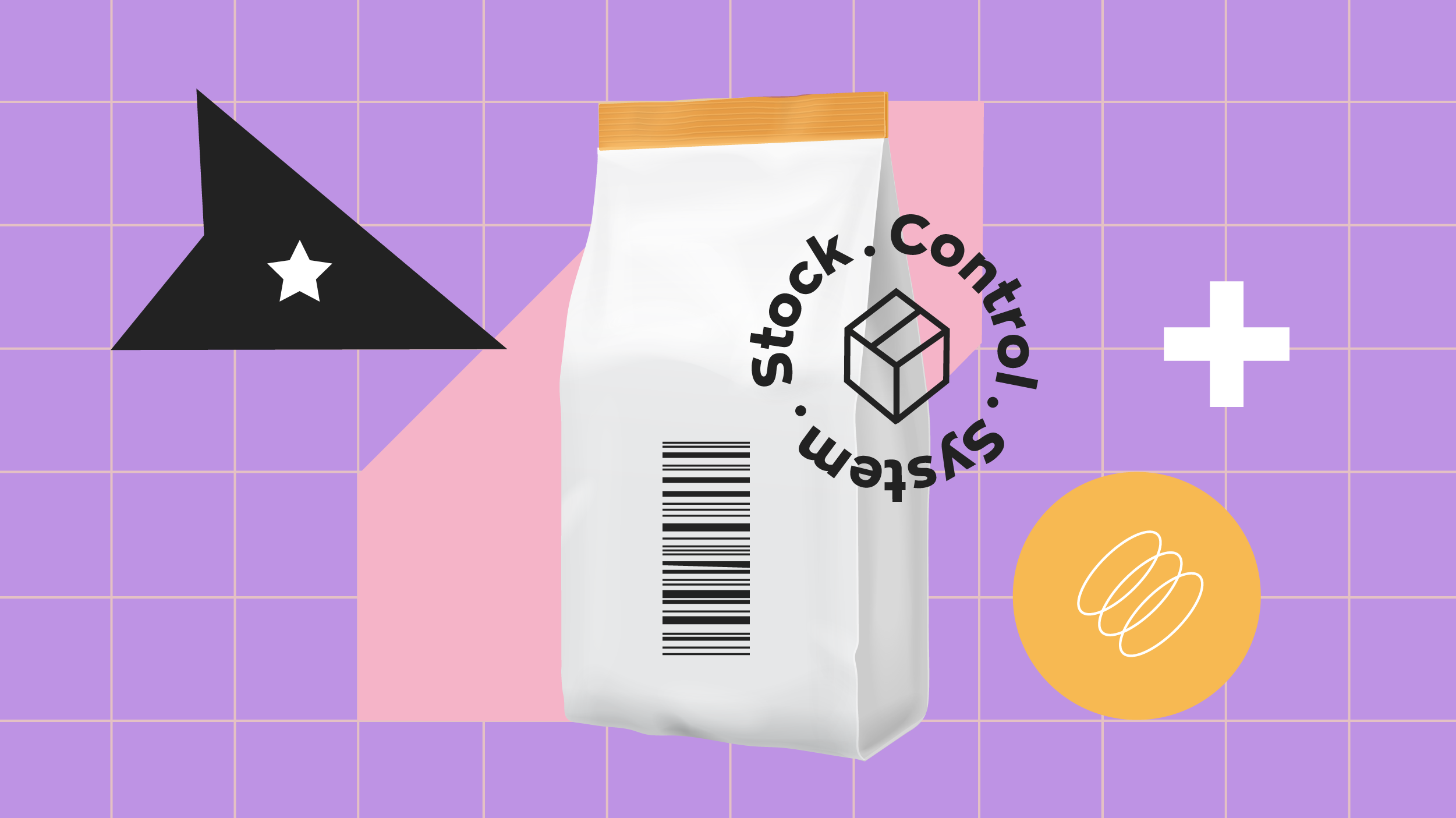For businesses that deal with physical items of any kind, it’s crucial to have some sort of stock control system in place. Of course, this statement raises its fair share of questions. What exactly is a stock control system? Why are they so important? What types of stock control systems are there? What should you look for in one? Today, we’ll be answering all of these questions– and hopefully a few more along the way.
What is a stock control system?
Before answering the why, it’s important to understand the what. So: what is a stock control system? As the name suggests, a stock control system (also called an inventory control system) refers to the tools a business uses to keep track of its inventory.
It’s important to note that the definition of “stock control system” has changed over time. In the past, a stock control system could have been nothing more than a pen and paper or an excel spreadsheet. There are still businesses that keep track of things like this, but while it might work in the short term (and only for the smallest of businesses), it’s typically unsustainable as a business grows.
In the modern age, a “stock control system” refers to the combination of methodologies, software, and hardware a business uses to keep track of its inventory. Barcode scanners, label printers, and inventory management software would all be parts of a modern-day stock control system.

It’s also important to know that there’s a difference between stock control systems and stock control methods.
What is a stock control method?
On the other hand, stock control methods refer to the overall processes businesses use to keep track of stock. There are a lot of different stock control methods– some old, some new– so we’ll only go over a few of the most popular ones.
Fixed-time/Fixed level stock management is when a business orders stock at identical levels and regular intervals. For example, one business might order 3,000 units every 30 days.
Economic Order Quantity (EOQ) uses a mathematical formula to keep stock at “optimal” levels, depending on the type of business and industry. The formula itself differs from industry to industry, meaning it may be best to consult with a professional.
Just-In-Time (JIT) is the most volatile type of stock management on this list. Stock is ordered only when required to minimize short-term spending. This method increases overall cash flow but carries the risk of running out of stock– leading to a loss in sales.
First-in-first-out (FIFO) management is generally used by businesses that deal with perishable items– like uncanned food or raw biological materials. In this stock control method, you would use all inventory in the order you receive it. Hence the name first-in-first-out.
Last-in-first-out (LIFO)* is the exact opposite of FIFO. With LIFO, businesses exhaust their most recently produced or purchased items first. LIFO is typically used as an accounting tactic. This method allows businesses to report a lower net income, which means they pay less in taxes.
*Note: LIFO is banned in many countries under the International Financial Reporting Standards (IFRS). Be sure to check your local legislation beforehand.

Are there different types of stock control systems?
Yes!
Broadly speaking, there are two types of stock control systems: perpetual and periodic.
A perpetual stock control system (like inFlow!) is an inventory software that updates itself in real time. When a product is sold, its barcode is scanned, removing it from the list of available inventory. Inversely, when new inventory is received, its own barcode is scanned, automatically adding it to the list of available inventory.
On the other hand, periodic systems are only updated occasionally, usually at set intervals. This method often involves a physical counting process, which– unfortunately– opens the door to human error. Such a method might be useful for smaller companies that don’t move many products or simply don’t have the money to integrate computerized systems into their workflow.
Once again, however, as a business grows, stock-keeping methods that rely on manual labor become unsustainable.
Why are they so important?
We could list the many reasons that a stock control system is essential. We won’t– but we could. Ultimately, it all has to do with one simple fact: time is money.
Alright, maybe it’s a proverb– but there’s some truth to it.
If you’re not actively monitoring your stock, you won’t know what products are available at a given time. For example, you could sell a product that you don’t currently have on hand– which then leads to further issues.
It also has to do with workflow efficiency. The more time spent managing your inventory, the less time you have to complete other, more critical tasks.

This is also why, over time, more and more businesses are shifting to a perpetual inventory control system. Instead of spending time (and by extension, money) counting your product, a perpetual inventory system does everything independently.
What should you look for in a stock control system?
There are many (many) things to look for in a stock control system. Generally speaking, they all fall into two categories: automation and integration.
Automation is pretty self-explanatory. Instead of completing tasks manually, you save time (and money!) by having an automated system complete them. For example, some programs automatically send notifications when your business runs low on a certain product– eliminating the need for you to check on it. This, in turn, means you can spend your time doing something more important.
Integration is a bit more tricky because it can refer to a lot of different things, but it generally refers to two factors. Ease-of-access, and how many different parts of the workflow can be consolidated in a single place.
If different parts of your business are on different platforms, you’ll have to frequently switch between interfaces, breaking your flow (see what we did there?) Furthermore, you and other inventory managers will need to learn how to use multiple programs. Then there is the issue of having to manually enter your data from one platform to another – eating up more precious time.
For already established businesses looking to adopt a digital system, it’s crucial that it fits into their already existing workflow. Otherwise, it could end up doing more harm than good.
Business runs on inventory
At the end of the day, having good stock control can make or break a business. Relying on clunky spreadsheets and other outdated systems will ultimately end up costing you in the long run. By adopting a sophisticated all-in-one stock control system, you’ll be setting your business up for success.
Software like inFlow puts inventory control, sales and invoicing, barcoding, reporting, and so much more all in one place. Basically everything you’re looking for in a well-rounded stock control system.
We’ve also made a point of integrating inFlow into as many parts of your business as possible. These range from popular eCommerce platforms like Shopify and Woocommerce to accounting software like QuickBooks Online and Xero. We’ve even included an invoicing service, allowing your customers to pay for invoices right from their browsers.
No matter where you are, inFlow puts everything right at your fingertips. Whether that’s from the laptop at your desk or the smartphone in your pocket, inFlow keeps everything under your control.






0 Comments